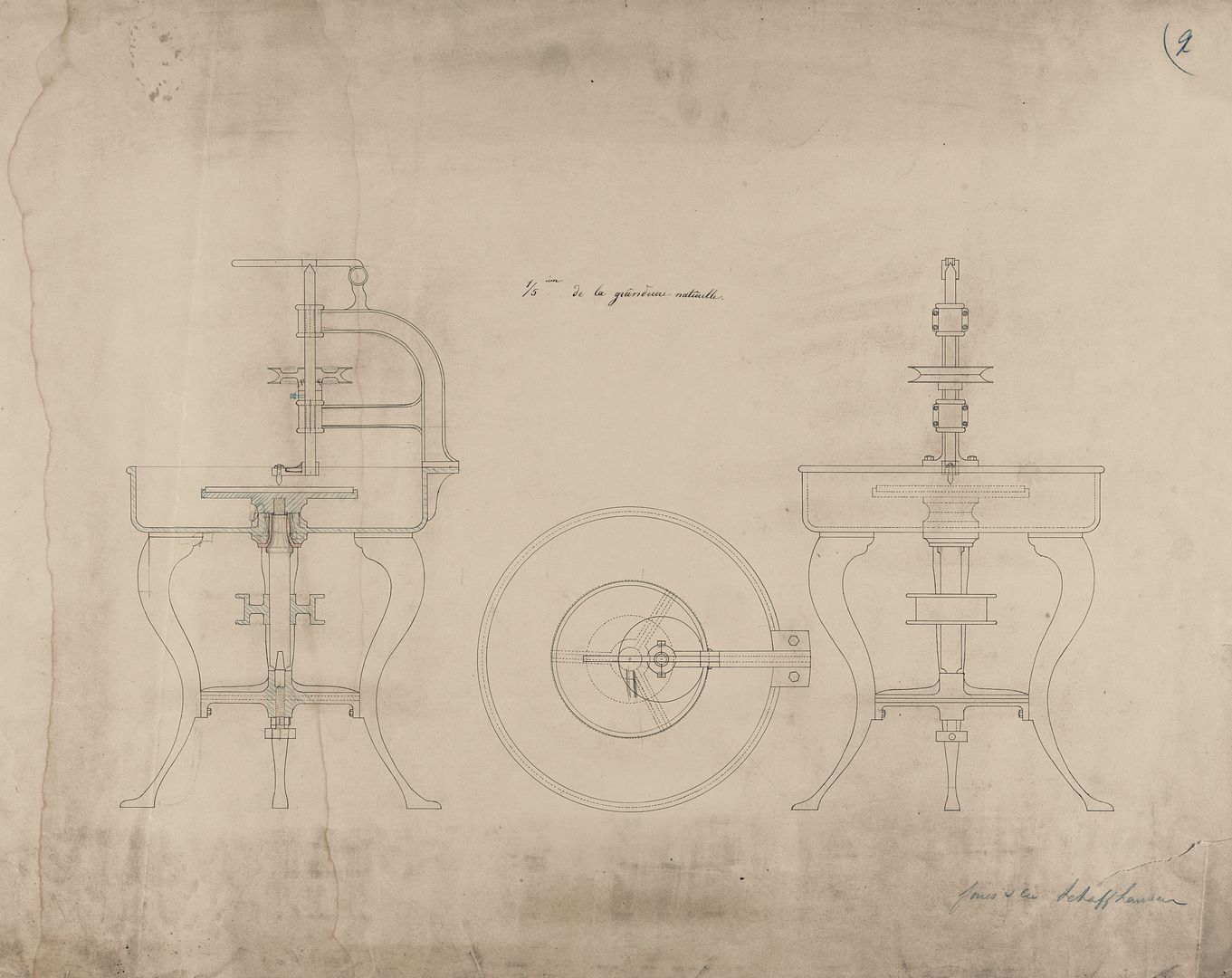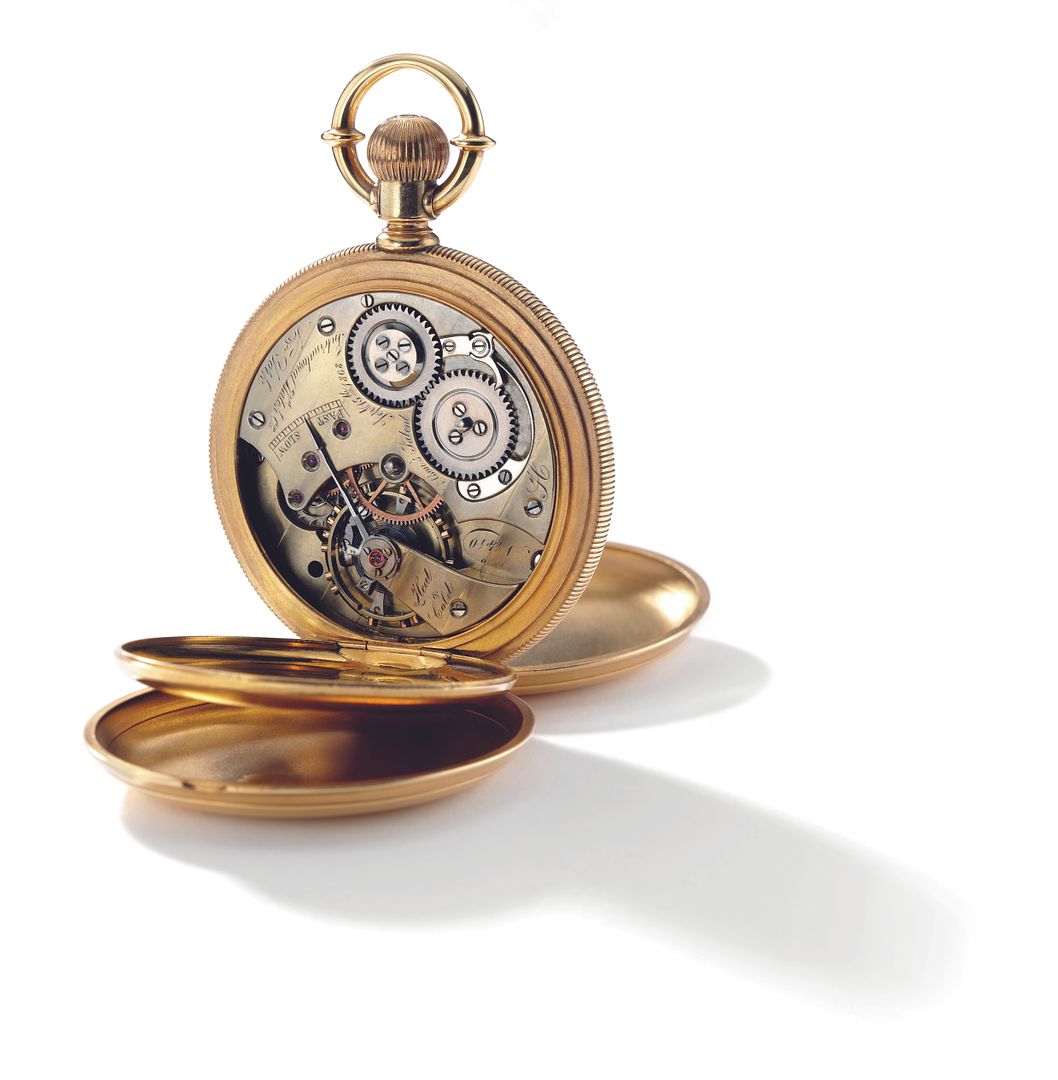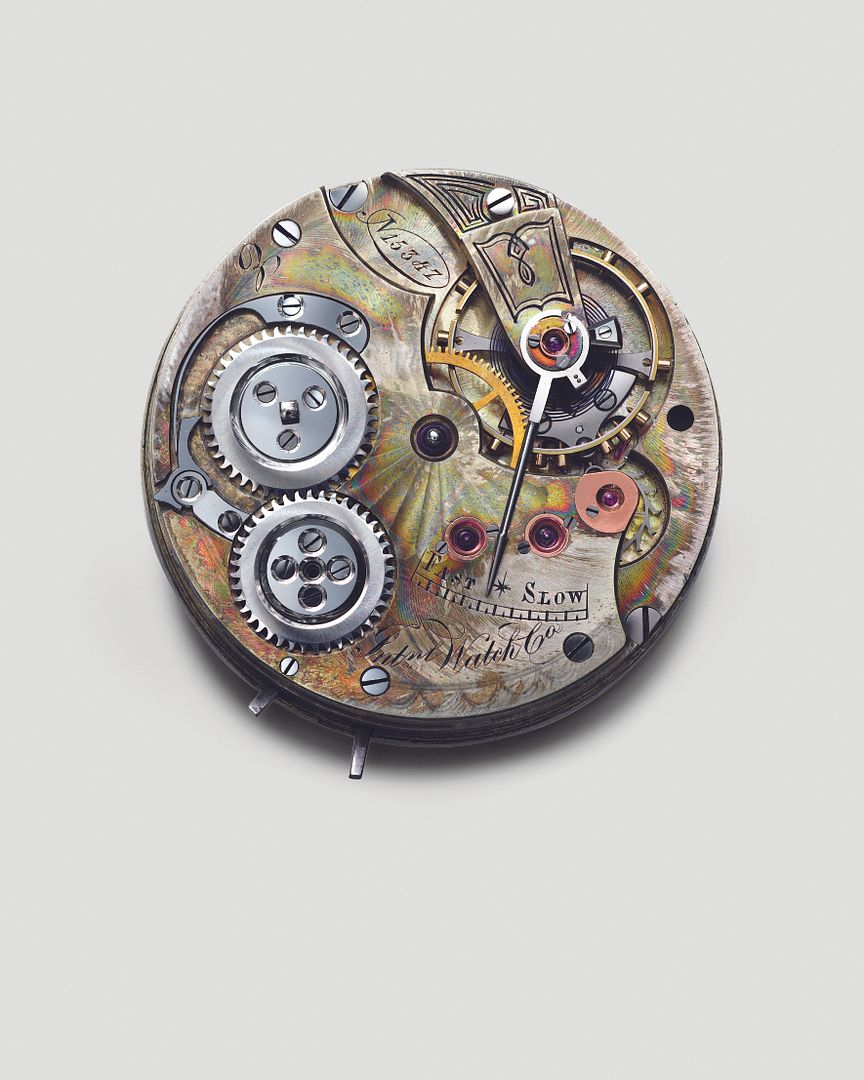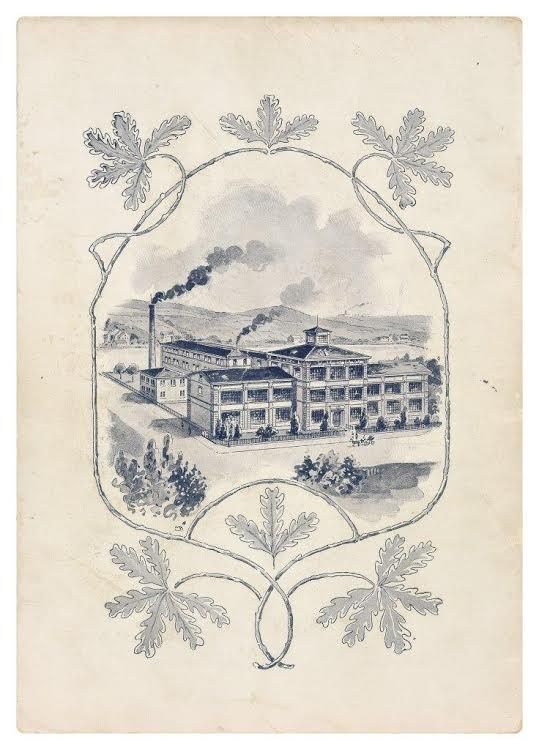Florentine Ariosto Jones, the American who founded International Watch Company in Schaffhausen, Switzerland, was an adventurous spirit with great foresight, but unfortunately saw his dreams crumble. Yet today the IWC that he first envisioned not only has survived but also has prevailed. If Mr. Jones could come back, in one sense he would not recognize the company that he founded. But the significant values that he instilled: fine engineering, excellent production systems and outstanding timekeeping products continue to thrive in Schaffhausen almost 150 years later.
The F. A. Jones story, in itself, is equally paradoxical. While much is known about the beginnings of IWC and Mr. Jones' start of the company, little is known about the company's founder as a person. More research is still needed. And like a fine watch movement, as more is uncovered the more intriguing the story becomes.
[ ](s1139.photobucket.com/user/michaelfriedberg/media/Signature_zps093b2a87.jpg.html)
](s1139.photobucket.com/user/michaelfriedberg/media/Signature_zps093b2a87.jpg.html)
{Signature of F.A. Jones (1874)}
F. A. Jones was born in 1841 in a small town in rural New Hampshire, to Solomon Jones and Lavinia Craig Jones. His father was listed in the 1850 census as a shoemaker, and his older brother, then 16, was a farmer. When he was nine, his household included several other relatives, Bradleys and Burns among others. One was a blacksmith, another a lawyer but most of the others were farmers.
By age 16, he left New Hampshire and went to Boston. In 1861 he enlisted as a private in a Massachusetts infantry regiment to fight in the U.S. Civil War. When he enlisted he described his occupation as watchmaker. In 1864 he was mustered out of the regiment, still as a private. Some suppose that he was injured during the War, since he left before the end and also there is one record reflecting that he asked for Civil War disability pay as an invalid in 1907.
After Jones left his regiment, from 1864 until 1868 he worked in Boston for a prominent U.S. watchmaker, E. Howard Watch & Clock, finally becoming an “assistant superintendent”. In 1867, at age 26, he applied for a U.S. passport and traveled to Europe for the first time. Undoubtedly, Jones' experiences as a watchmaker, learning the industrialized manufacturing processes in the U.S., and then seeing Europe in combination must have motivated him to take a great leap. Even without much knowledge of European culture, let alone languages, he then traveled to Switzerland to establish his own watch manufacturing operation. It was a bold move and perhaps with hindsight a foolhardy one.
[ ](s1139.photobucket.com/user/michaelfriedberg/media/PassportApp_zps22fdb624.jpg.html)
](s1139.photobucket.com/user/michaelfriedberg/media/PassportApp_zps22fdb624.jpg.html)
{Passport Application, F.A. Jones (January 16th 1869; Source: National Archives and Records Administration, Washington, D.C.)}
Originally Jones went to different locations in Switzerland; most likely, he intensively evaluated the western part of Switzerland, but soon was deterred from establishing any operations there. The watchmaking industry there, much of which was Huguenot based, was very much a cottage industry. However, in the eastern part of Switzerland, the Canton Schaffhausen in the 1860s wanted to attract entrepreneurs and push the small town’s economy by providing facilities and low price hydro-mechanical power for “‘start-up’ business units”. Because of these site-related factors Jones then decided to select the small town of Schaffhausen in 1868 to found his company, together with a friend, Charles Kidder, who also was an American watchmaker.
[ ](s1139.photobucket.com/user/michaelfriedberg/media/JonesMachine_zps7c19766d.jpg.html)
](s1139.photobucket.com/user/michaelfriedberg/media/JonesMachine_zps7c19766d.jpg.html)
{Drawing for a case decoration machine signed “Jones & Cie, Schaffhausen” 1871}
During the period of 1868-1869, International Watch Company was launched, although one document lists the initial name as F. A. Jones & Co.. The first production was watch movement components and then complete movements based on designs that Jones brought with him from America. In fact, the whole idea by 1871 was to produce movements to be exported to the United States, where a parallel company with U.S. partners would market and encase them.
[ ](s1139.photobucket.com/user/michaelfriedberg/media/Jones1_zps66f04533.jpg.html)
](s1139.photobucket.com/user/michaelfriedberg/media/Jones1_zps66f04533.jpg.html)
{IWC Pocket watch, Pattern B, “Henry Burns” serial 3301, approx. 1872}
Initially, production was small and there seemed to be constant struggles for capital. It seems that Jones understood well watchmaking and the new American industrialized practices for producing movements. But his business acumen may have been more limited, especially given that this was his first entrepreneurial venture, and an overseas one at that, while he was in his late 20s.
Despite capital limitations, the early watches produced, which are now known as Jones movements, were generally high quality products with interesting features. Most were stem-wound and set, avoiding the dated and cumbersome key winding or setting features of lesser watches. In 1868, Jones became an assignee of Elson's Patent, a new way of attaching watch mainsprings, and he used that in his products. Jones also filed for a patent in 1871 for an improvement in hand setting systems.
[ ](s1139.photobucket.com/user/michaelfriedberg/media/Jones2_zpsed44241d.jpg.html)
](s1139.photobucket.com/user/michaelfriedberg/media/Jones2_zpsed44241d.jpg.html)
{Early Savonette pocket watch Jones Calibre, Pattern H, serial 1410}
Many of the movements had names inscribed on them, instead of “International Watch Company”: Greenleaf, Craig, Romney, Stuyvesant, Bradley and Burns. These mostly were names of Jones' family members or related places. For example, Greenleaf was Jones' brother and Craig was his mother's maiden name. Some have speculated that these people helped Jones with his initial funding, but there is no proof of that.
Beyond their technical qualities and names, the watches had certain relatively unique characteristics such as the now-called “Jones' needle” --a long index for regulating the watch which was reversed from its usual position. As such, the index had a longer arc for fine regulating the watch movement. The movements were made in many different variations, today termed as Patterns. The stem-wound savonette (or hunter, with the crown at 3 o'clock) movements were made in Patterns B, D, E, H, R and S, and three of those patterns also were made in key-wound and set movements. There are further numerous variations within each Pattern, as well documented in the excellent book by Seyffer, König and Myers entitled F.A. Jones – His Life, Legacy and Watches. These include some with different metal used for plates, some with as few jewels as 11 and others with as many as 20, as well as different balance wheels and escapement parts.
[ ](s1139.photobucket.com/user/michaelfriedberg/media/Jones3_zpsa1af8d6f.jpg.html)
](s1139.photobucket.com/user/michaelfriedberg/media/Jones3_zpsa1af8d6f.jpg.html)
{Savonette Jones pocket watch movement, Pattern E, serial 15347. (December 1875)}
Some might believe that these numerous production variations contradicted Jones' concept of wide-scale industrialization, and with hindsight constituted a business error. Certainly initial production was not huge: by January 1874 – six years after the first steps in forming the company and probably three years after first production – only about 6,000 watch movements were sold, and it was claimed that another 5,000 were in production. In February of that year, the company had 93 employees and the goal was to produce at least 10,000 watches annually, which never was achieved. To achieve his goals Jones invested more in infrastructure, machinery and recruited more employees. In June 1875, 196 people worked for IWC.
[ ](s1139.photobucket.com/user/michaelfriedberg/media/Factory_zps64df7403.jpg.html)
](s1139.photobucket.com/user/michaelfriedberg/media/Factory_zps64df7403.jpg.html)
IWC main building established in March 1875 (view from approx. 1890)
One problem may have been distribution, since the initial agents in New York were unable to sell sufficient quantities of this new and unknown product. This may have been due to competition and changes in the U.S. market. Regardless, it appears that Jones believed that increasing production would produce economies of scale and, as such, a more competitive product. To that end, he realized that consolidated facilities and more capital would be needed. In 1874 he therefore set up a Swiss joint stock company and also obtained credit from local Swiss banks. Jones also started to negotiate with a Swiss company, Schwob Frères, who agreed to buy all of IWC's production of about 9,000 watches.
These steps might have been his downfall: there were numerous conflicts between Jones and his new administrative board. The board accused Jones of fraud and suspected that he might have had an unspecified interest in Schwob Frères. The new building cost double what was anticipated, and Jones asked the board to take over a bank loan. There were production cost overruns, sales did not perform as expected and liquidity ran out. But nevertheless an independent audit by the Schaffhausen government concluded that an annual production of 10,000 to 15,000 watches would be possible in the future. This validated the effectiveness of production processes introduced by Jones. However, this was too late; while Jones was very popular among his employees, a certain portion of the shareholders opposed him. In 1876, local banks caused the sale of the factory and remaining inventories, and the Jones era at IWC unfortunately ended.
Jones returned to the United States. In 1877 he rejoined the Free Order of the Masons, which he initially joined in 1868 and for which in 1888 he became a charter member of a new lodge. In 1882, at the age of 41, he married Susan P. Jones (who apparently was unrelated) in New Hampshire. They never had any children.
For the rest of his life, it appears that Jones may have only once briefly returned to Europe, and he never had any significant further involvement with the watch industry. His failure in Schaffhausen must have left a bitter taste in his mouth. Jones filed for bankruptcy in 1878, upon his return to the United States, and his property and effects were assigned in 1881 to a receiver. When Jones married, he listed his occupation as “merchant”. He then became employed by the American Steam Appliance Company near Boston, and apparently developed steam piping systems. He also designed clockwork systems for cash registers.
One issue that haunts historians is why there are few, if any, photographs of Jones. There are two Jones pocket watches with couples depicted on them, and the man on one is sometimes believed to be Jones. This is doubtful, because of the age of the person and given that Jones then was unmarried. Recently, a photograph of a Civil War soldier from Jones' regiment was found, holding a pocket watch and appearing to meet the passport description of Jones. Still, there is no definitive proof that this soldier was Jones.
An anonymous person once claimed via e-mail to be a relative of Jones, and thought that Jones had been injured in the Civil War, such that he shunned photographs. There is no verification for this as well, but US government pension papers show that Jones in 1907 claimed a pension as an invalid. After his death, his widow Susan claimed a Civil War widow's pension.
Jones died in 1916 in Massachusetts, and was cremated at Mt. Auburn Cemetery in Cambridge, Massachusetts. His widow lived until 1922 but was not interred there. Jones' final resting place offers good company, including Henry Wadsworth Longfellow, Amy Lowell and Henry Cabot Lodge, Jr.. Florentine Ariosto Jones may not have been as famous as those buried where his remains were interred, but he made a major contribution to the history of Swiss watchmaking. Yet it is doubtful that he ever recognized that, given the initial failure of his youthful and ambitious venture.
[ ](s1139.photobucket.com/user/michaelfriedberg/media/Portrait_zps88d6b8ed.jpg.html)
](s1139.photobucket.com/user/michaelfriedberg/media/Portrait_zps88d6b8ed.jpg.html)
{Founder of IWC Schaffhausen: Florentine Ariosto Jones (1841-1916)}